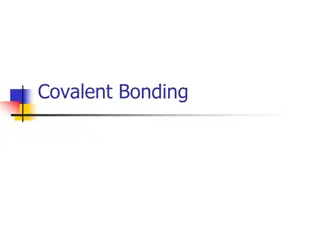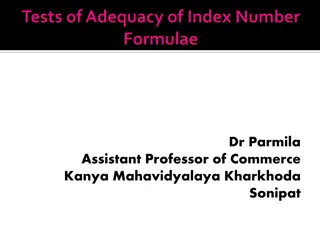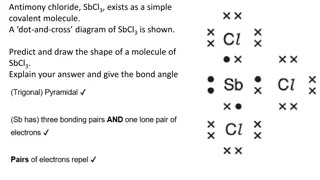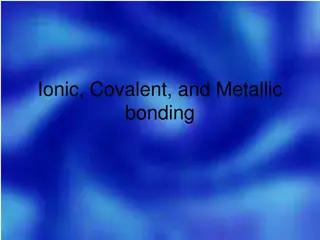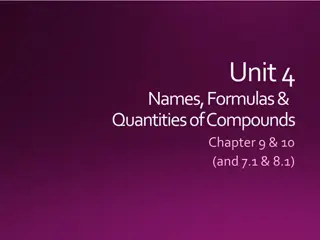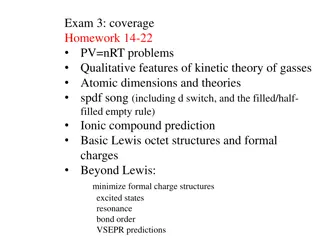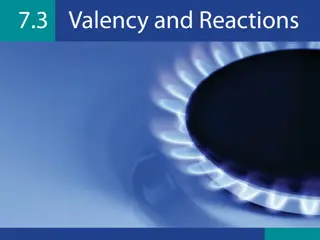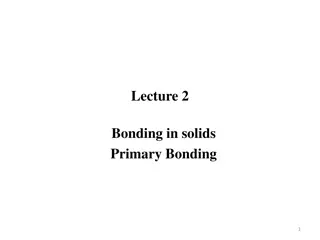Chemical Formulas and Rules of Bonding
This content covers the basics of chemical formulas, counting atoms, and the rules of bonding to create larger particles than atoms. Learn about shorthand notation, examples of chemical formulas, vocabulary related to molecules and compounds, and the key rules for ionic and covalent bonding.
Download Presentation

Please find below an Image/Link to download the presentation.
The content on the website is provided AS IS for your information and personal use only. It may not be sold, licensed, or shared on other websites without obtaining consent from the author.If you encounter any issues during the download, it is possible that the publisher has removed the file from their server.
You are allowed to download the files provided on this website for personal or commercial use, subject to the condition that they are used lawfully. All files are the property of their respective owners.
The content on the website is provided AS IS for your information and personal use only. It may not be sold, licensed, or shared on other websites without obtaining consent from the author.
E N D
Presentation Transcript
1. Chemical Formulas 2. Counting Atoms 3. The Rules of Bonding How do we make larger particles than atoms?
Chemical Formulas- Shorthand way to write a chemical molecule or compound SYMBOL-shorthand for one atom of an element SUBSCRIPT- Lower right corner (behind the symbol) Tells you number or atoms for that element If there is no subscript-it means one atom COEFFICIENT- In front of formula Tells you how many molecules you have All elements are multiplied by that number
Chemical Formula Examples- Ways you may see molecules/compounds written Ba Ba means Barium- if no subscript you only have one Cl2 There is a subscript of 2 so this means you have 2 Chlorine atoms There is a subscript of 2 behind the H so there are 2 Hydrogen Atoms. How many atoms of Sulfur? How many atoms of Oxygen? H 2 SO4
Chemical Formula Examples- Ways you may see molecules/compounds written There is a coefficient of 2 in front of the whole formula. This means all the elements in the formula are multiplied by 2 2NaSO4 NaSO4 + NaSO4 When you have a subscript outside parenthesis, you multiply each element INSIDE them by that subscript Ca3(PO4) 2
Examples to start with: How many molecules? How many Hydrogens? Oxygens? 2H2O 3Na2SO4 How many molecules? How many Hydrogens? Sulfurs? Oxygens? 4Pb(NO3)2 How many molecules? How many Leads? Nitrogens? Oxygens?
MORE VOCABULARY MOLECULE: 2 or more atoms bonded together COMPOUND: 2 or more different atoms bonded together This happens during CHEMICAL BONDING IONIC BONDING -bonding between a ratio of metals and nonmetals COVALENT BONDING- bonding between two or more nonmetals
RULES OF BONDING TWO TYPES TO KNOW FOR NOW: IONIC BONDING -bonding between a ratio of metals and nonmetals COVALENT BONDING- bonding between two or more nonmetals RULES FOR EACH FAMILY: Alkali Metals, Halogens, and Hydrogen make only ONE bond Alkaline Earth Metals, and Chalogens make TWO bonds Boron Group and Nitrogen Group makes THREE bonds Carbon Group makes FOUR bonds Noble gases make NO BONDS! Transition metals depends on the individual element.
Counting Atoms Examples 2H2O Molecules of H2O: H (Hydrogen) : O(Oxygen) : 3Na2SO4 Molecules of Na2SO4 Na (Sodium) S (Sulphur) O (Oxygen) 2 4 2 3 6 3 12
Counting Atoms Examples 4Pb(NO3)2 Molecules of Pb(NO3)2 Pb (Lead) N (Nitrogen) O (Oxygen) 4 4 2 6
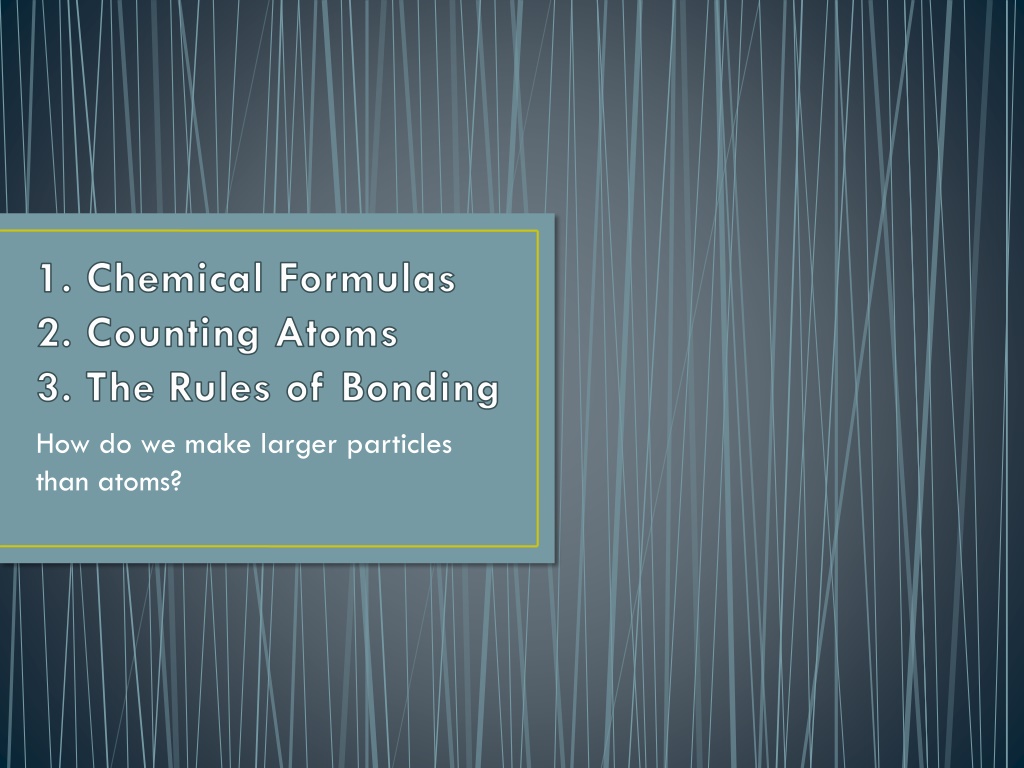
 undefined
undefined







